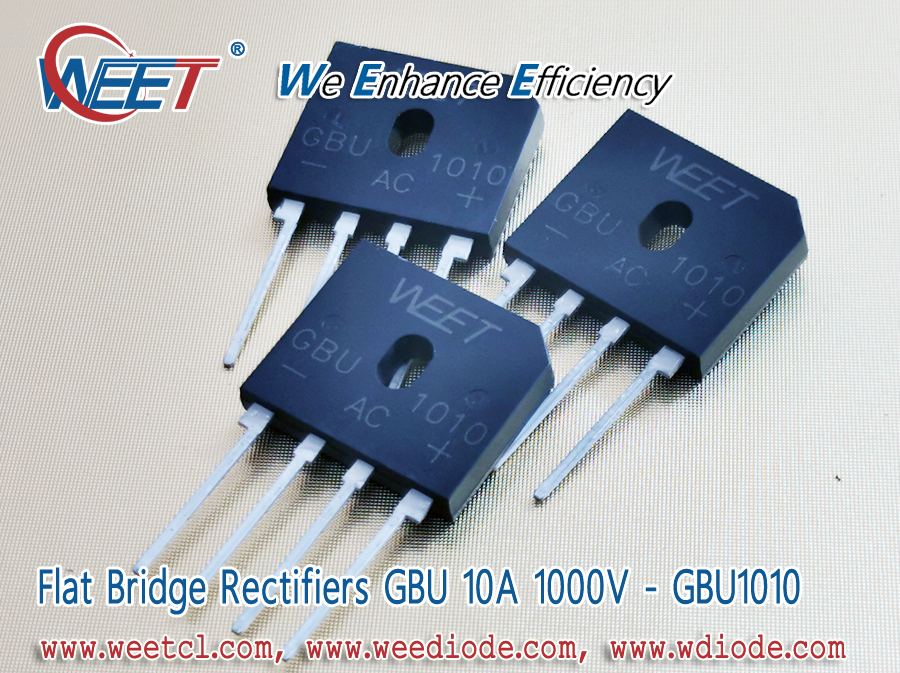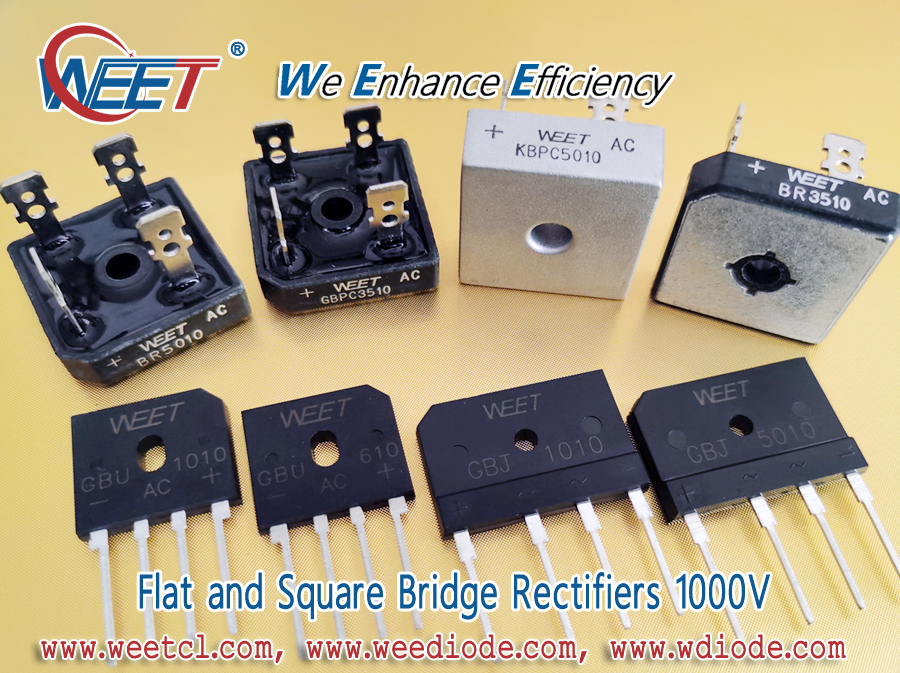WEE Technology Company Limited
We are WEE, We Enhance Efficiency
Manufacturer of Diode Rectifier, Bridge Rectifier, Transistor
WEET
is a high-tech enterprise specializing in R&D, production and sales
of semiconductor discrete devices. The company has introduced a full
set of foreign advanced equipments and scientific management system, and
its product quality enjoys a good reputation in domestic and overseas
markets. WEET has passed the ISO9001:2015 quality management system, and
all products comply with environmental protection ROHS, REACH, and
halogen-free standards.
WEET product models are complete: General
Purpose Rectifiers, High Efficiency Rectifiers, Ultra-Fast Recovery
Rectifiers, Fast Recovery Rectifiers, Single Phase Bridge Rectifiers,
Transient Voltage Suppressors, Schottey Barrier Rectifiers, High Speed
Switching Diodes, Silicon Planar Zener Diodes, Small Signal Transistors
etc. Package forms are: SOD-123, SOD-323, SOD-523, SMAF, SMBF, SMA, SMB,
SMC, SOT-23, SOT-323, SOT-523, TO-220AB, DO-41, DO-15, DO-27, R-6, MBS,
MBF, ABS, ABF, DBS, KBP, GBP, KBU, GBJ, GBU, KBL etc.
Products
are widely used in mobile phone chargers, switching power supplies, LED
lighting drive power supplies, smart meters, smart water meters, smart
appliances, smart sockets, instrumentation, small home appliance control
panels, 5G consumer electronics, etc.
GBU1010 GBU bridge rectifier is a rectifier device composed of two or four diodes.
The
bridge stack has three types of half bridge,full bridge, and
three-phase bridge, and there are two types of positive half bridge and
negative half bridge.
The full bridge consists of four diodes with four lead-out pins.
The
connection point of the cathodes of the two diodes is the "positive" of
the full-bridge DC output terminal, and the connection point of the
anodes of the two diodes is the "cathode" of the full-bridge DC output.
The half bridge is composed of two diodes with three lead-out pins.
The
pins on both sides of the positive half-bridge are the anodes of the
two diodes, that is, the AC input terminal; the middle pins are the
cathodes of the two diodes, that is, the "positive" of the DC output
terminal.
The negative poles of the two diodes on the pins on both
sides of the negative half bridge are the AC input terminals; the middle
pin is the anode of the two diodes, that is, the "negative" of the DC
output terminal.
A positive half bridge and a negative half bridge can form a full bridge.
Example:
WEET Flat Bridge Rectifiers GBU 10A 1000V GBU1010 Single Phase Bridge
Through Hole GBU10005 GBU1001 GBU1002 GBU1004 GBU1006 GBU1008
more product support: https://weetcl.com/Products/
Skype, Email: info@weediode.com
Written by WEE Technology Company Limited
 more product support: https://weetcl.com/Products/
more product support: https://weetcl.com/Products/